Physics For Civil Engineering: Unit III: Acoustics and Lighting Designs
Measurement of Daylight
Luminous flux and intensity
The amount of light being given off by a particular source, in all directions is called luminous flux (or "luminous power"). It is a measure of the total perceived power of light and it is measured in lumens.
MEASUREMENT OF DAYLIGHT
Luminous flux and intensity
The
amount of light being given off by a particular source, in all directions is
called luminous flux (or "luminous power"). It is a measure of the
total perceived power of light and it is measured in lumens.
Radiant
flux is a related measure that quantifies the total power of the light
radiation from a source. It is not just visible light but also infrared and
ultraviolet light and it is measured in watts.
Illuminance
In
photometry, illuminance is the total luminous flux incident on a surface, per
unit area. It is a measure of how much the incident light illuminates the
surface.
It is wavelength-weighted by the
luminosity function to correlate with human brightness perception.
Illuminance
is the measure of light currently used by most performance indicators to
determine daylight availability in the interior.
The
amount of light falling on a surface is "illuminance", and it is
measured in lux (lumen/m2) (Fig. 3.10)
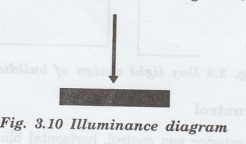
Illuminance
levels can be measured with a luxmeter as shown in figure 3.11.
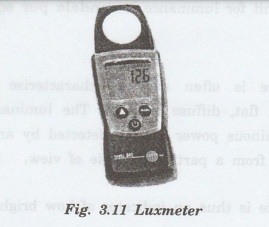
Typical
Illuminance Values

Minimum
Levels for Tasks and Activities

Luminance
It
is a photometric measure of the luminous intensity per unit area of light
travelling in a given direction. It describes the amount of light that passes
through (emitted or reflected from a particular area) a given solid angle.
(Fig. 3.12)
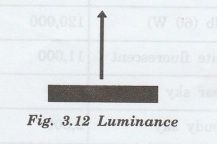
The
SI unit for luminance is candela per square metre (cd/m2)
Luminance
is often used to characterize emission or reflection from flat, diffuse
surfaces. The luminance indicates how much luminous power will be detected by
an eye looking at the surface from a particular angle of view.
Luminance
is thus an indicator of how bright the surface will appear.
In this case, the solid angle of interest
is the solid angle subtended by the eye's pupil. Luminance is used in the video
industry to characterize the brightness of displays.
A
typical computer display emits between 50 and 300 cd/m2. The sun has luminance
of about 1.6× 109 cd/m2
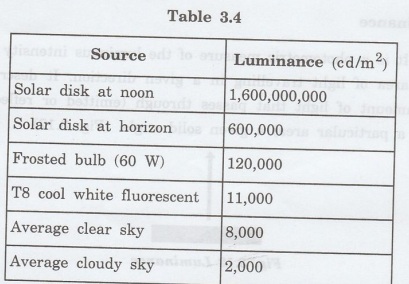
Luminance
levels can be measured with a luminance meter, shown in fig. 3.13. It can also
be measured using high dynamic range (HDR) imaging techniques together with a
digital camera and luminance mapping software (e.g. Photolux).
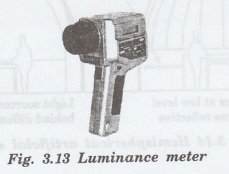
Luminance levels can be predicted
through the use of computer simulation with recognized and validated software.
Physics For Civil Engineering: Unit III: Acoustics and Lighting Designs : Tag: : Luminous flux and intensity - Measurement of Daylight
Related Topics
Related Subjects
Physics for Civil Engineering
PH3201 2021 Regulation | 2nd Semester Civil Dept 2021 Regulation
